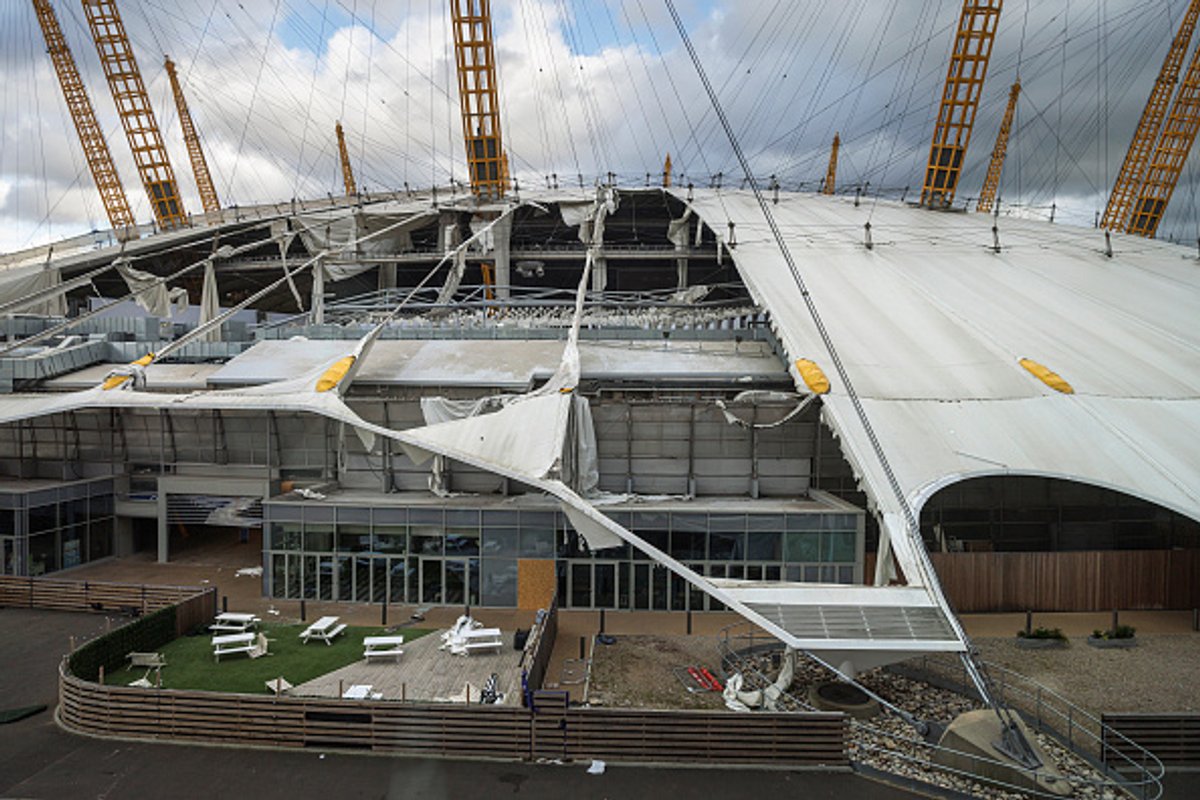Royal Museums Greenwich took a break from normal duties today—by tweeting a series of renderings and witness statements from The Great Storm of 1703.
The storm is thought to have been more costly in terms of damage than the Great Fire of London in 1666.
The Caird Library at Greenwich’s National Maritime Museum holds a copy of Daniel Defoe’s The Storm, published in 1704, and the museum began to publish on their website a selection of first-hand witness accounts of “the fierce and raging storm” — what Defoe termed as a “dreadful Tempest”.
Perhaps, one day, a museum will show the historic mobile footage of disaster and chaos across the UK created by the dreadful Tempest of Storm Eunice, a freak weather event which has battered Britain with winds recorded of up 122mph, some of the strongest since 1703.
As we batten down the hatches against #StormEunice, we're looking back to the Great Storm of 1703 – one of the worst recorded storms to hit Britain. Our archives includes 1st-hand accounts of the storm that caused more damage than the Great Fire of London: https://t.co/7TbXYBLhZR pic.twitter.com/Blt4PjuCqH
— Royal Museums Greenwich (@RMGreenwich) February 18, 2022
The storm has led the Met Office to issue a rare a rare red weather warning—stating travellers will experience a danger to life from flying debris. So perhaps best to get your culture from a Twitter livestream of planes battling winds to land at Heathrow rather than a gallery exhibition today.
The storm has already damaged many cultural and heritage sites across the UK, and forced many others to close.
Witnesses in London recorded the O2 Arena, previously known as the Millennium Dome, as it was “shredded to pieces” by the winds, with large sections of the taut sheeting that covers the iconic event venue becoming loose and flying into the Thames.
The venue opened in 1999 as the centrepiece for the UK’s millennium celebrations, and has since become one of the world's most popular and commercially successful event venues.
Elsewhere, The Church of St Thomas in Wells, Somerset, a Grade II listed building built in 1856 and extended by Samuel Sanders Teulon in 1864, was severely damaged by the weather, with footage showing the church’s spire splitting, the spire tip, wind vane and lightning conductor crashing into the ground.
Still, for committed purveyors of outdoor sculpture, some of the UK’s outdoor art galleries appear to be braving the conditions for now.
The Yorkshire Sculpture Park, in Wakefield, has not made any reference to Storm Eunice as yet, meaning the 500 acres of land dotted with contemporary art is still at this time accessible for the more itinerant of art lovers.
But plenty of other museums and public galleries across the UK decided to heed the Met’s warning to stay indoors and not risk the winds.
These include numerous National Trust properties and gardens, including Bodiam Castle in East Sussex and Basildon Park in Berkshire, Petworth House and Park in West Sussex, Stowe Gardens and New Inn in Buckinghamshire, and Winkworth Arboretum in Surrey.
In the Bristol area, the Bristol Museum and Art Gallery has closed, urging would-be patrons to “stay safe”. Another museum in the area, Aerospace Bristol in Filton, has also informed visitors that it will close today due to the weather.
In the north of England, Museum Gardens, in the centre of York, managed by the charity York Museums Trust, is also closed, as is Carlisle castle, which houses Cumbria’s Museum of Military Life. In Wales, Makers Guild Wales Gallery in Cardiff also confirmed it would close until the storm passes.
In London, St. Paul’s Cathedral Dome Galleries and Churchyard Gardens announced it would close, as would the London Museum of Water and Steam in Brentford and Headstone Manor Museum in Harrow. The Royal Botanic Gardens in Kew, west London and Wakehurst, West Sussex, will also shut.
In the areas surrounding London, The Natural History Museum in Tring, Focal Point Gallery in Southend-on-Sea and The Beaney House of Art & Knowledge in Cantebury, and Colchester Castle Park and the Hollytrees Museum all announced they would close.
In Ireland, Johnstown Castle Estate, a neo-Gothic castle on 120 acres which features the Irish Agricultural Museum, is closed too, while in Cornwall, the Royal Cornwall Museum, Truro, will shut until the storm resides.
Until then, stay safe.


